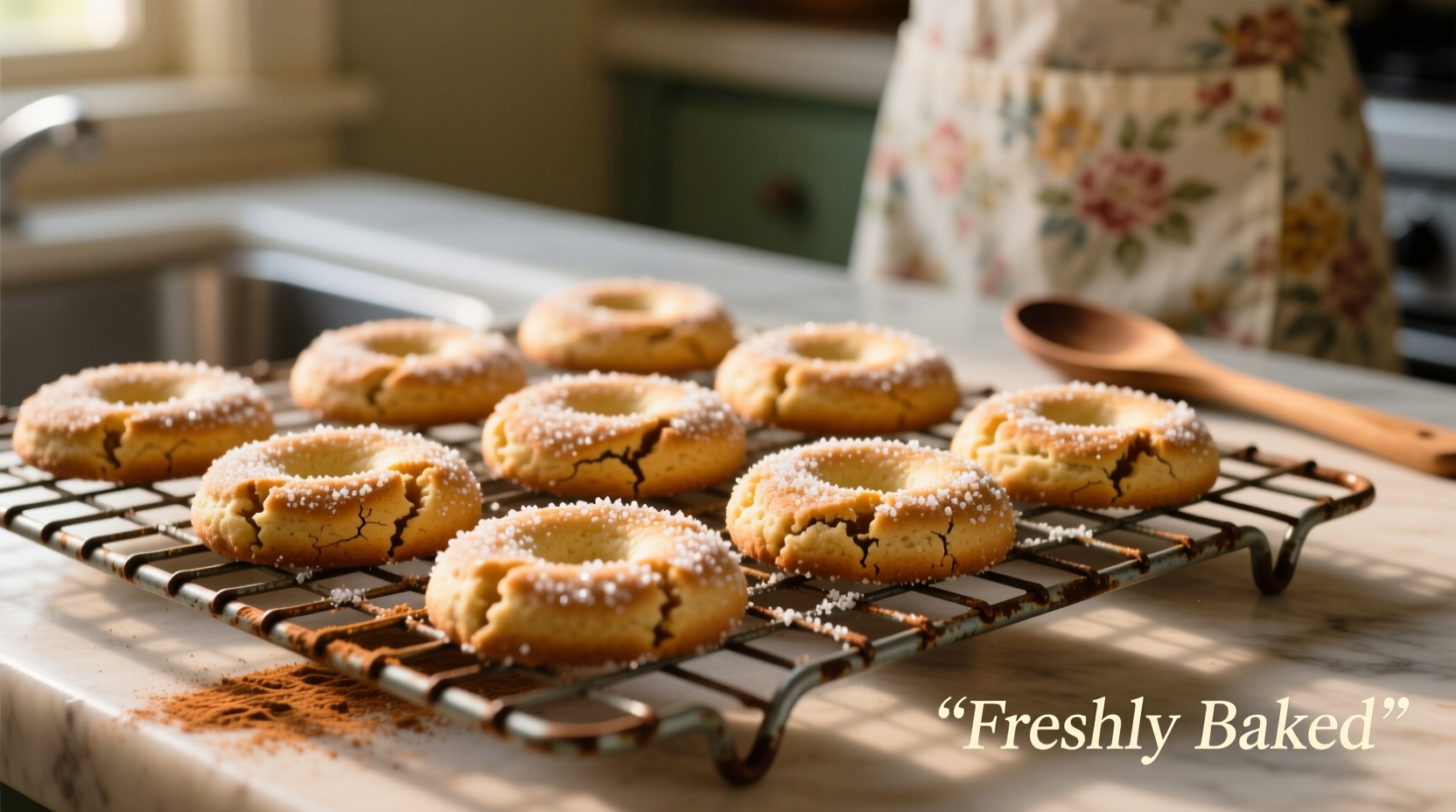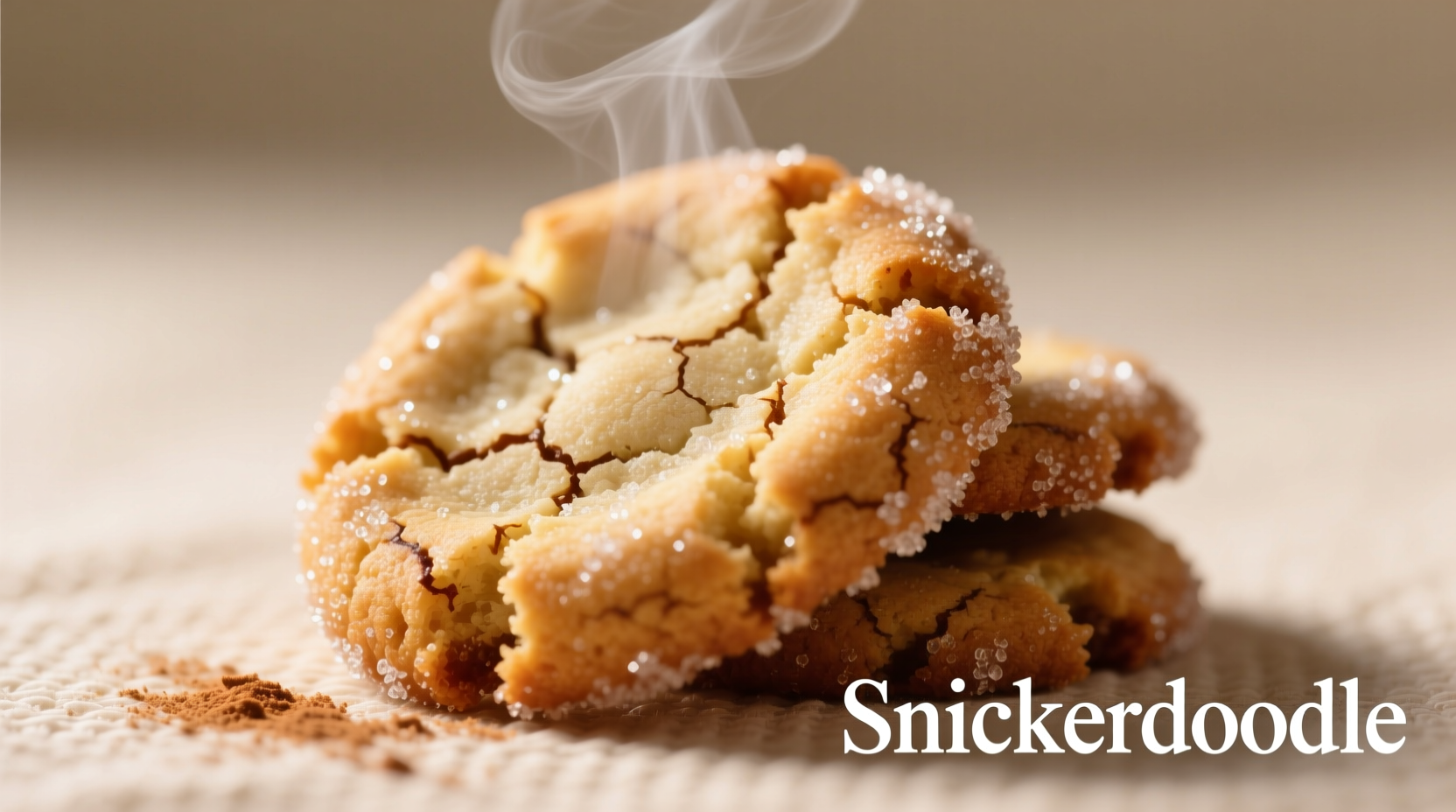The Signature Flavor Experience of Snickerdoodles
When you take your first bite of a classic snickerdoodle, you immediately experience a distinctive flavor profile that sets it apart from other cookies. The outer layer delivers a pronounced cinnamon kick followed by the subtle sweetness of granulated sugar, while the interior reveals a rich, buttery vanilla cookie base with a tender, chewy texture.
Breaking Down the Flavor Components
Understanding what makes snickerdoodles taste the way they do requires examining their essential components:
| Flavor Element | Contribution to Taste | Proportion Impact |
|---|---|---|
| Cinnamon-Sugar Coating | Provides immediate warm spice with sweet balance | 1:3 ratio creates optimal flavor without overpowering |
| Vanilla Base Dough | Creates rich, buttery foundation with subtle floral notes | Double-strength vanilla enhances complexity |
| Tartaric Acid (Cream of Tartar) | Adds distinctive tang that balances sweetness | Essential for authentic snickerdoodle character |
Texture Journey: More Than Just Taste
The sensory experience of snickerdoodles extends beyond flavor to texture, which significantly influences perceived taste. According to the USDA Agricultural Research Service, the cream of tartar in traditional recipes creates a unique chemical reaction that produces:
- Crackled exterior - The cinnamon sugar forms a delicate crust that shatters slightly when bitten
- Chewy center - Higher moisture retention creates that signature soft interior
- Melting quality - The fat-to-flour ratio allows the cookie to dissolve pleasingly on the tongue

How Snickerdoodles Differ From Similar Cookies
Many confuse snickerdoodles with sugar cookies or other cinnamon treats, but the distinctive taste comes from specific elements:
- Cream of tartar - This ingredient creates the subtle tang that balances the sweetness, making snickerdoodles taste more complex than standard sugar cookies
- Cinnamon application method - Unlike cookies with cinnamon baked in, the rolled coating creates an immediate spice hit followed by the vanilla base
- Texture contrast - The combination of crisp edges and soft center enhances flavor release during eating
The Science Behind the Flavor Harmony
Food chemistry explains why these components work so well together. Research from University of Illinois Extension shows that the cream of tartar (tartaric acid) reacts with baking soda to create carbon dioxide bubbles while also lowering the dough's pH. This chemical process:
- Enhances browning reactions that develop complex flavor compounds
- Preserves moisture for that characteristic chewiness
- Creates the perfect environment for cinnamon's cinnamaldehyde to express its full aromatic potential
Regional Variations and Their Flavor Impact
While the classic American snickerdoodle maintains consistent flavor characteristics, regional adaptations create interesting taste variations:
- New England style - Often includes a touch of nutmeg that adds earthy complexity
- Midwestern versions - Tend toward higher cinnamon ratios for more pronounced spice
- Modern gourmet interpretations - May incorporate brown butter for caramel notes or orange zest for brightness
These variations demonstrate how small ingredient adjustments significantly alter the final taste profile while maintaining the essential snickerdoodle character.
Perfect Pairings: Enhancing the Snickerdoodle Experience
Certain beverages and accompaniments can elevate your snickerdoodle tasting experience:
- Hot coffee - The bitterness cuts through sweetness while complementing cinnamon notes
- Cold milk - Creates a classic contrast that enhances the cookie's richness
- Vanilla ice cream - The cold temperature contrasts with the cookie's warmth for a delightful sensory experience
Understanding these pairings helps you appreciate the full dimensionality of what snickerdoodles taste like in different contexts.
Why Your First Snickerdoodle Memory Matters
Psychological research from American Psychological Association indicates that our first experience with a food creates a lasting flavor memory. This explains why some people describe snickerdoodles as "cinnamony" while others emphasize the "vanilla-butter" aspect—their initial exposure shaped their flavor perception. The objective flavor profile remains consistent, but individual experiences vary based on preparation methods and personal taste memory.
Common Questions About Snickerdoodle Flavor
Why do snickerdoodles taste different from sugar cookies?
Snickerdoodles contain cream of tartar, which creates a distinctive tang that balances the sweetness. They're also rolled in cinnamon sugar rather than having spices baked in, creating a different flavor release pattern than standard sugar cookies.
Do authentic snickerdoodles have a sour taste?
Yes, traditional snickerdoodles have a subtle tang from the cream of tartar. This slight sourness balances the sweetness and is a defining characteristic that distinguishes them from other cinnamon cookies.
How does the cinnamon ratio affect snickerdoodle flavor?
The standard 1:3 cinnamon-to-sugar ratio creates optimal flavor. Too much cinnamon overwhelms the delicate vanilla base, while too little diminishes the signature spicy-sweet profile. Professional bakers recommend measuring spices precisely for consistent results.
Why do some snickerdoodles taste more buttery than others?
The butter quality and preparation method significantly impact flavor. Recipes using browned butter develop richer, nuttier notes, while proper creaming technique incorporates air that enhances the perception of butteriness in the finished cookie.
Can you taste the cream of tartar in snickerdoodles?
You don't detect cream of tartar as a distinct flavor, but its chemical reaction creates the cookie's characteristic tang that balances sweetness. Omitting it results in a flatter-tasting cookie that lacks the authentic snickerdoodle complexity.











 浙公网安备
33010002000092号
浙公网安备
33010002000092号 浙B2-20120091-4
浙B2-20120091-4